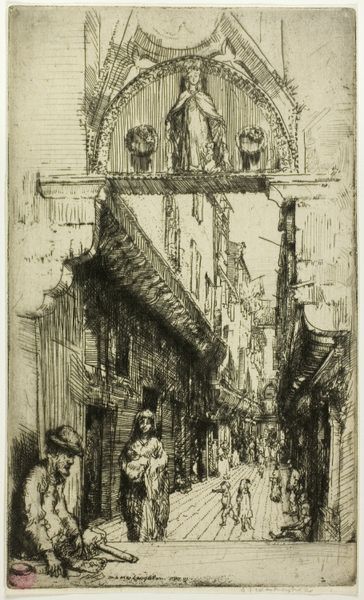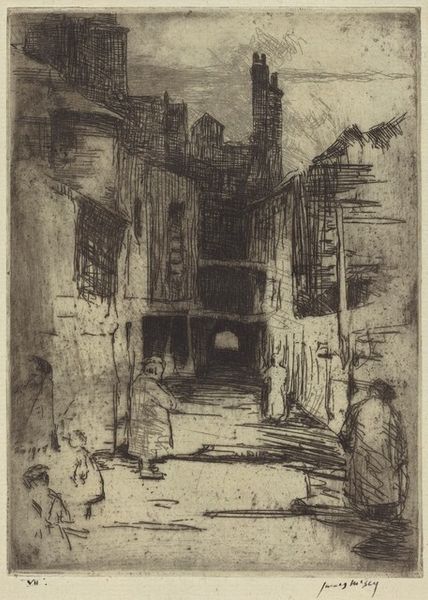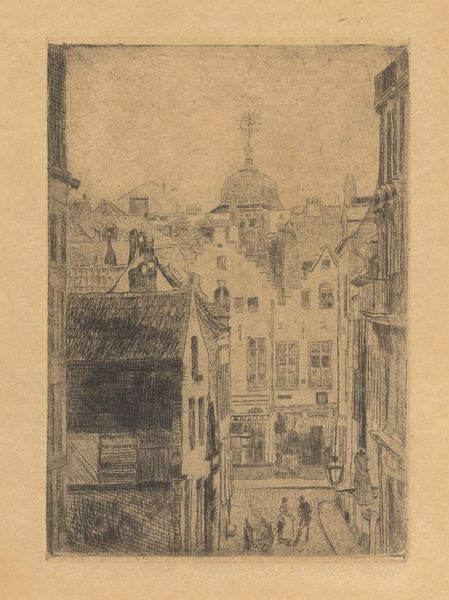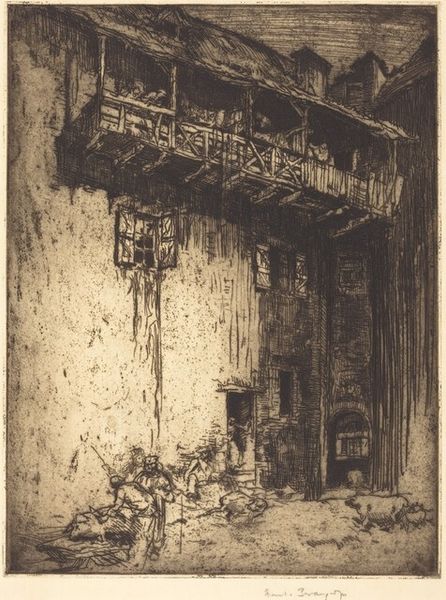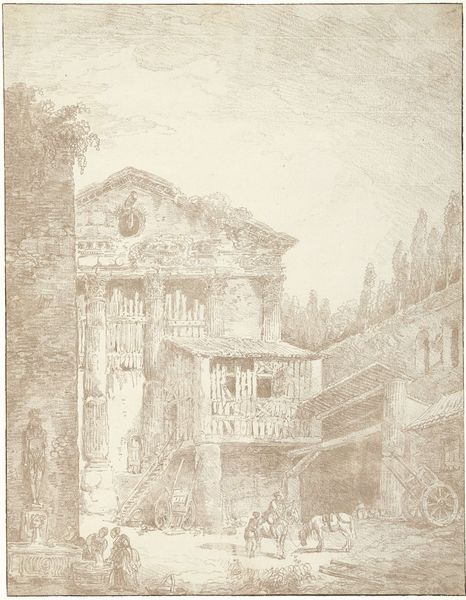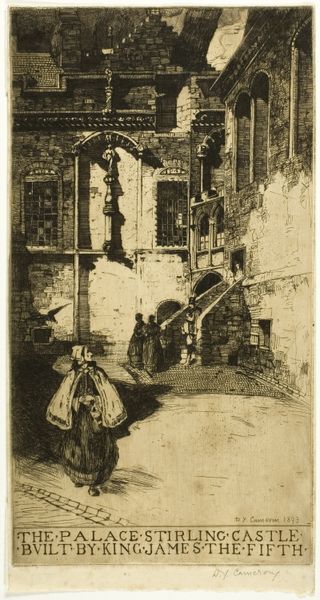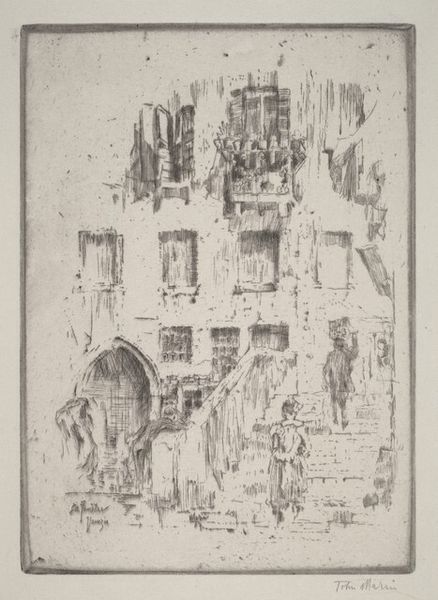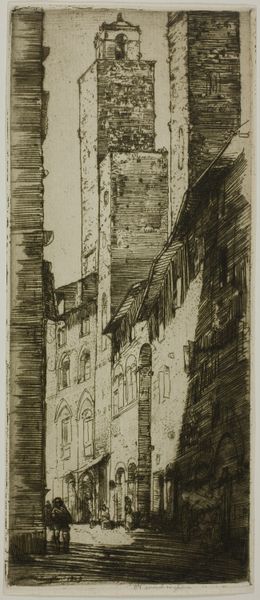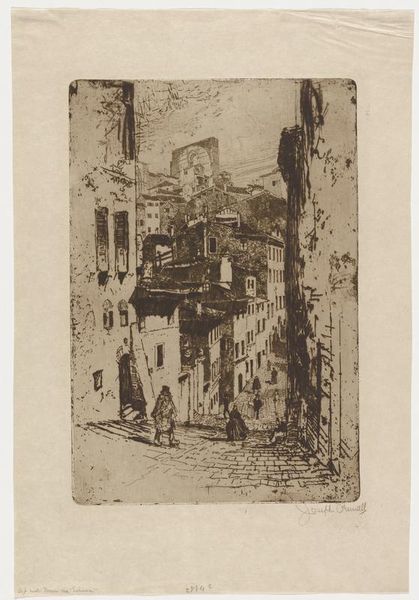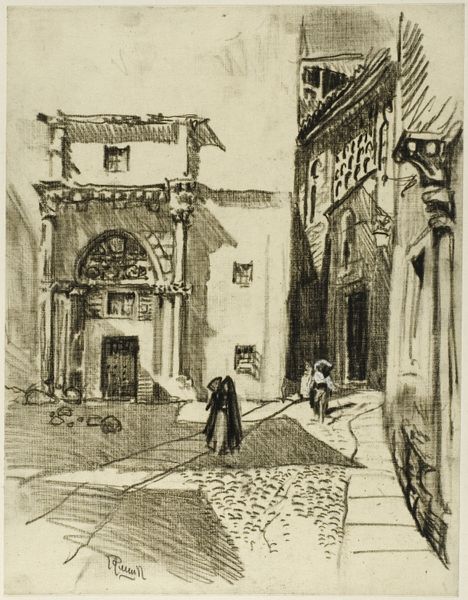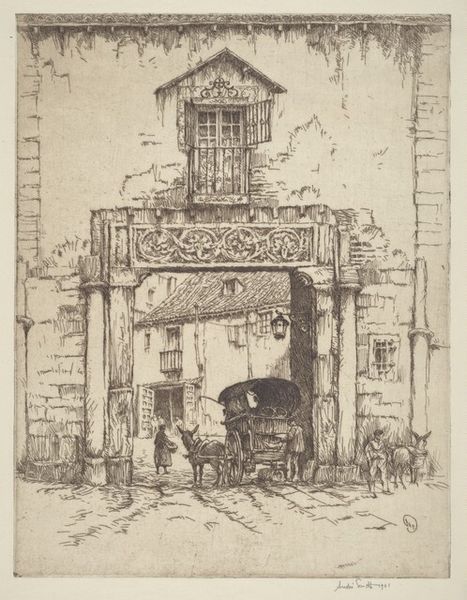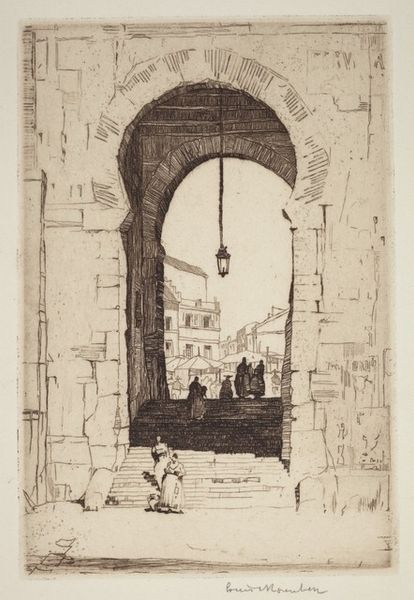
drawing, print, etching, paper
#
drawing
# print
#
etching
#
paper
#
cityscape
#
realism
Dimensions: 212 × 155 mm (image); 216 × 155 mm (sheet)
Copyright: Public Domain
Curator: Immediately, I'm struck by the grittiness, almost an overwhelming sense of texture—you can practically feel the cobblestones. Editor: Yes, there's a rawness, isn't there? We're looking at "Cour de Commerce, Paris," an etching created by Donald Shaw MacLaughlan around 1900. It's currently held here at the Art Institute of Chicago. For me, it speaks to the rapid urbanization occurring in Paris at the turn of the century, the way industry and traditional life were colliding. Curator: An etching is perfect for capturing that feel. Think about the acid biting into the metal plate—it mirrors the corrosive effects of industrialization on the city's fabric and communities. You have to consider, too, that printmaking democratizes art. It becomes accessible. This scene, this specific labor, can reach a wider audience than, say, an oil painting hanging in a private salon. Editor: Absolutely. The figure sweeping in the foreground, rendered with such starkness, it becomes symbolic of the working class striving in the margins of the city. The architecture looms over them, almost indifferent to their labor. There's a tension between the individual and the built environment, a constant negotiation of space and power. It really shows the precarity of marginalized labor and a subtle comment on visibility in a rapidly changing city. Curator: And consider the choice of perspective. MacLaughlin places us within the courtyard, making us participants in this scene. He used a rigorous methodology to display the buildings' features, and we also need to recall the etcher's technical skill that would involve very exacting, repetitive labor to generate the plate in order to explore and comment on repetitive work that takes place in the urban context. Editor: True. There's something quite haunting in how that courtyard, ostensibly a place of commerce, feels so desolate and isolating. Curator: For me, it's this work's commitment to conveying what it’s like to live and exist within it through its materials, processes and reproduction. It offers insight to an environment that can speak about the conditions in that period. Editor: It challenges us to consider whose stories get told and how urban spaces shape—and often limit—the possibilities of daily life. Thanks to MacLaughlin we can think critically and carefully of how to resist marginalization. Curator: Indeed. Every choice—the material, the composition, the perspective—contributes to a nuanced and lasting impression. Editor: It remains profoundly relevant.
Comments
No comments
Be the first to comment and join the conversation on the ultimate creative platform.
